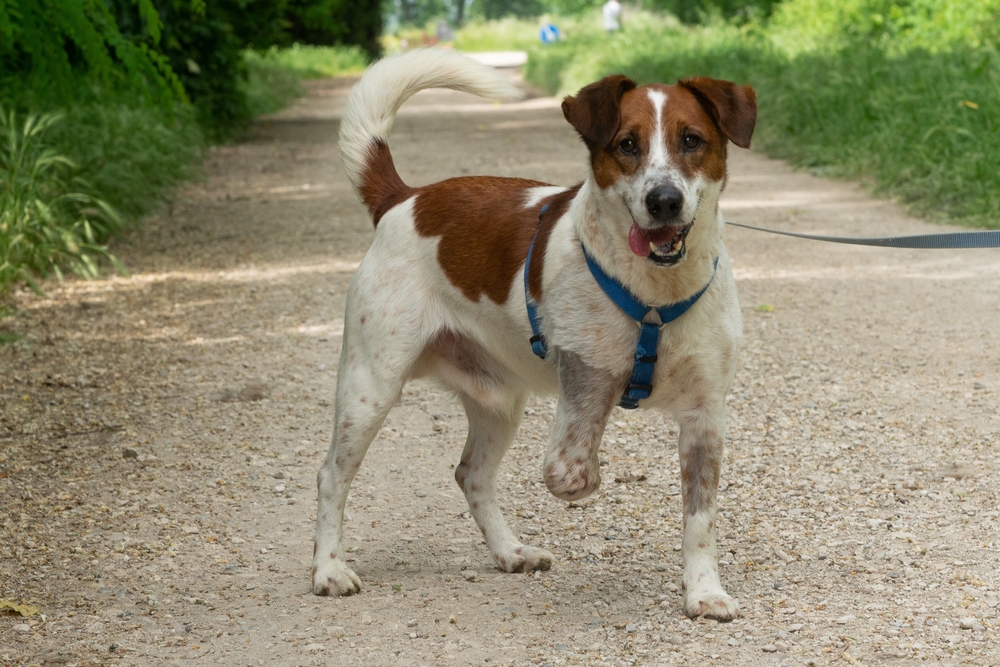Limb amputation in pets, while a significant decision, sometimes becomes a necessary intervention for various medical reasons. At Happy Tails Animal Hospital, we approach such procedures with utmost care, compassion, and precision. Under the expert oversight of Dr. Mann, our primary focus is on ensuring the safety and improved quality of life for your beloved pet.
Symptoms Indicating the Need for Limb Amputation
- Persistent pain or limping despite treatments
- Severe trauma or injury to the limb
- Non-healing wounds or infections
- Tumors or growths that are aggressive or malignant
- Congenital deformities causing discomfort
Understanding the Imperative for Limb Amputation in Pets
When faced with the decision of limb amputation for a pet, owners often grapple with understanding the reasons behind such a significant procedure. At the heart of the matter, the well-being and comfort of the pet often stand out. In situations where a limb causes chronic pain or discomfort, amputation emerges as a solution that can provide substantial relief. It’s a decision rooted in compassion, aiming to alleviate unnecessary suffering.
Additionally, there are pressing medical reasons to consider. Limbs affected by malignant tumors present the danger of cancerous spread, making amputation a critical intervention for disease control. Moreover, in cases where limbs are paralyzed or non-functional, their removal can significantly improve mobility, granting pets a renewed sense of freedom. All these factors culminate in one overarching objective: enhancing the quality of life for our pets, ensuring they lead a life as pain-free and joyous as possible.
Treatment Process
- Thorough Examination: Dr. Mann begins with a comprehensive evaluation to determine the necessity and feasibility of the procedure.
- Pre-Operative Care: Preparations might include blood tests, imaging, and other diagnostic procedures.
- The Amputation: Under general anesthesia, the limb is surgically removed using sterile techniques, ensuring minimal discomfort to the pet.
- Post-Operative Care: Pain management and wound care become paramount, with instructions provided for at-home care.
- Rehabilitation: Physical therapy and adaptation training may be recommended to assist the pet in adjusting to its new physical state.
Prioritizing Pet Safety: Proactive Measures for Prevention
One of the most effective strategies to preempt potential health issues in pets is ensuring they have regular check-ups with a veterinarian. These routine visits play a pivotal role in the early detection of ailments or conditions. By catching and treating these concerns in their initial stages, one can often circumvent more drastic interventions, such as amputations.
Additionally, the environment in which our pets reside and play significantly impacts their well-being. It’s paramount to ensure these spaces are devoid of hazards that might inflict serious injuries. Beyond environmental safety, the timeliness in addressing medical concerns also bears weight. Swiftly attending to infections, open wounds, or unusual growths facilitates quicker healing and notably reduces the risk of further complications.
Anticipating Post-Amputation Life: Hope and Adaptability

The prospect of limb amputation in a pet understandably brings a gamut of emotions and concerns, especially regarding their subsequent quality of life. Yet, time and again, animals have showcased an extraordinary ability to adapt to new circumstances. Their innate resilience, combined with appropriate post-operative care, often sees them adjusting with surprising speed to their altered physical state.
Dr. Mann, along with the compassionate team at Happy Tails, is deeply committed to facilitating this transition. Their combined expertise ensures that every necessary support and intervention is provided, promoting a swift return to an active, contented life for your pet. The overarching goal remains consistent: offering your cherished companion the best opportunity for a comfortable, joyous existence post-procedure.
Frequently Asked Questions
How long does it take for a pet to recover after a limb amputation?
Recovery times can vary based on the individual pet and the specifics of the procedure. However, most pets begin to adjust and show signs of recovery within a few weeks. Dr. Mann will provide specific post-operative guidelines and timelines tailored to your pet’s situation.
Will my pet need special equipment or modifications at home after the amputation?
Some pets benefit from modifications like non-slip mats or ramps, especially during the initial adjustment period. Dr. Mann will offer recommendations based on your pet’s specific needs and circumstances.
How can I support my pet’s emotional well-being post-amputation?
Spend quality time with your pet, offering comfort and positive reinforcement. Engaging in gentle play and providing toys can help in their emotional recovery. It’s also beneficial to consult with Dr. Mann or a pet behaviorist for further guidance on helping your pet adjust.
Consult with the Experts
Facing the decision of limb amputation for your pet can be challenging. Lean on the expertise and compassion of Dr. Mann and the team at Happy Tails Animal Hospital in Renton, WA, to guide you through the process. Prioritizing your pet’s well-being, we’re here to answer all your concerns. Schedule a consultation by calling (425) 254-2779. Your pet’s health and happiness are our ultimate goals.


